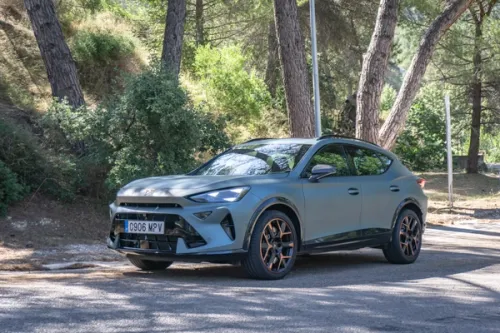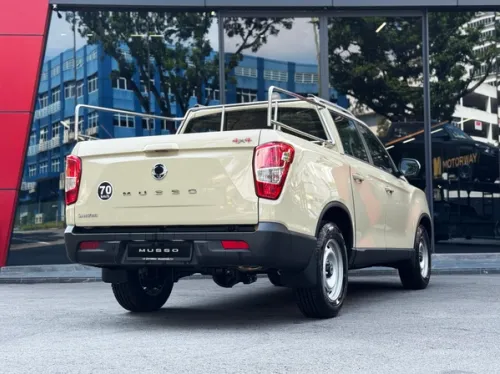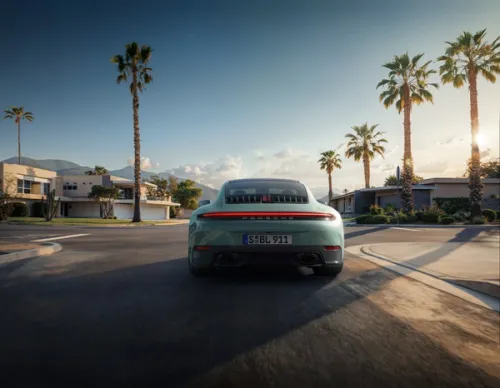Toyota RAV4 US Edition
All-new fourth generation compact SUV debuts at the 2012 Los Angeles motor show with new exterior design, more space and new driving systems.


Toyota is proud of the fact it created the compact SUV market with the launch of the original RAV4 back in 1994, pioneering three-door model – its name standing for Recreational Active Vehicle 4-wheel drive – was quite different from traditional 4x4s, being conceived as an “urban” all-wheel drive vehicle with a monocoque chassis rather than body-on-frame construction, and independent suspension.
Power came from a relatively small 2.0-litre, transverse mounted petrol engine.rnrnToyota’s vision for a new kind of car proved a big success that other manufacturers were keen to follow. Today there are around 20 different models competing in the segment.rnrnThe three generations of RAV4 have amassed more than 4.5 million sales in more than 150 countries worldwide. European markets have accounted for more than 1.2 million of that total, with sales in the UK surpassing 155,000 units by the end of last year.
The fundamental design elements that have defined RAV4 down the years remain equally relevant for the new fourth generation model, but while it remains true to its heritage, it has evolved to meet changes in customer requirements and preferences, particularly the importance families place on space and versatility.
To strengthen its appeal in these respects, the new RAV4 builds on the core values of its predecessors, while introducing distinctive new styling, a premium quality interior, stronger and more rewarding dynamic performance and more fuel-efficient powertrains.
The new RAV4’s cabin is spacious, comfortable and provides the driver with a cockpit-like position at the wheel. It extends the practicality of its predecessors by offering more room, higher quality finishes and a more focused and engaging driving experience. The new dashboard comprises strong upper and lower beams, interrupted by a curved, metal-finished spar to frame the instrument binnacle, steering wheel and driver’s footwell.
The clean and sophisticated design introduces high quality materials, including soft padding on many of the touch-points for driver and passengers, crisp trim finishes, new colours and more leather around the instrument panel. All the instrument and switchgear is backlit in cool blue, adding to the sophistication and consistency of the cabin environment. RAV4 remains compact and manoeuvrable, but within its overall length of 4,570mm and 2,660mm wheel base Toyota has created significantly more room inside for passengers and load space that’s on a par with large saloons.
The front-to-rear seat couple distance is now a best-in-class 970mm. Combined with a thinner front seatback design, this increases rear legroom. The rear seats have been made more comfortable by increasing the cushion’s length and increasing its surface angle. Higher side bolsters have been added, too.
Thanks to Toyota’s Easy Flat system, the rear seats can be quickly and easily folded flat. The seats divide 60:40 and each section can be reclined independently. The loadspace is longer, increasing capacity to 547 litres, and an extra 49 litres of storage have been added to the undertray, taking it to 100 litres. The side-hung tailgate that has featured on all previous versions of RAV4 has been replaced with a top-hinged unit. On some versions this is power operated. The tailgate opening has the lowest lip height in its class, at 645mm, and a 1,370mm-wide aperture.
Successive generations of RAV4 have built on the original’s fun to drive character and established its reputation for ride comfort, ease of driving, manoeuvrability and steadfast performance in challenging driving conditions as well as providing a more comfortable and focused driving position, the new RAV4 builds on its SUV attributes with retuned suspension, revised electric power steering and an Integrated Dynamic Drive System that comes with a new Sport mode.
Together these revisions and introductions make for greater stability and agility in the wet and dry, giving a more confidence-inspiring, intuitive and involving drive. Down-hill Assist and Hill-start Assist Control are also available. Down-hill Assist is featured on all models equipped with automatic transmission and is particularly helpful when driving in icy conditions or snow; it automatically controls gear selection, engine speed and the ABS’s individual wheel braking to help the driver keep skid-free control of the vehicle on slippery descents.
The Integrated Dynamic Drive is a sophisticated high-speed interactive management system which co-ordinates control of RAV4’s new Dynamic Torque Control AWD system, Vehicle Stability Control and electric power steering to improve performance, handling and safety. The Dynamic Torque Control constantly monitors and controls the transfer of drive torque between the front and rear axles using an electromagnetic coupling located ahead of the rear differential. The torque distribution can vary from 100:0 to 50:50, front to rear. Front-wheel drive (100:0) is automatically engaged in normal driving conditions to achieve the best fuel economy.
The system determines the degree of torque transfer using data from a series of sensors monitoring vehicle speed, steering angle, throttle angle and yaw rate. In Normal mode (when neither Sport nor Lock mode is activated), torque is transferred to the rear wheels only when slip is detected – as in the previous generation model – or when understeer is detected during cornering. This makes for better agility and driving performance, both on and off-road.
When Sport mode (standard on AWD models) is engaged, torque transfer to the rear wheels begins the moment the steering wheel is turned. The Dynamic Torque Control AWD System, taking feedback from the driver’s steering inputs, will automatically adjust to a 90:10 front:rear torque transfer to reduce the load on the front tyres. Should understeer develop, torque transfer to the rear wheels will be increased by up to 50 per cent, further reducing the loading on the front wheels and giving better lateral grip as well as activating the dynamic element in the system’s torque transfer, Sport mode modifies the steering, throttle and transmission: steering assistance is reduced, throttle response is sharpened and the CVT or automatic transmission management operates with higher revs to give a sportier driving experience.
The system has a 4WD Lock button for off-road driving, allowing the driver to lock torque distribution in a 50:50 ratio at speeds up to 25mph (40km/h).
Credits: wilswong


Get the Best Price for your used car
from 500+ dealers in 24 hours

- Convenient and Hassle-Free
- Consumer Protection
Transparent Process
With No Obligation








